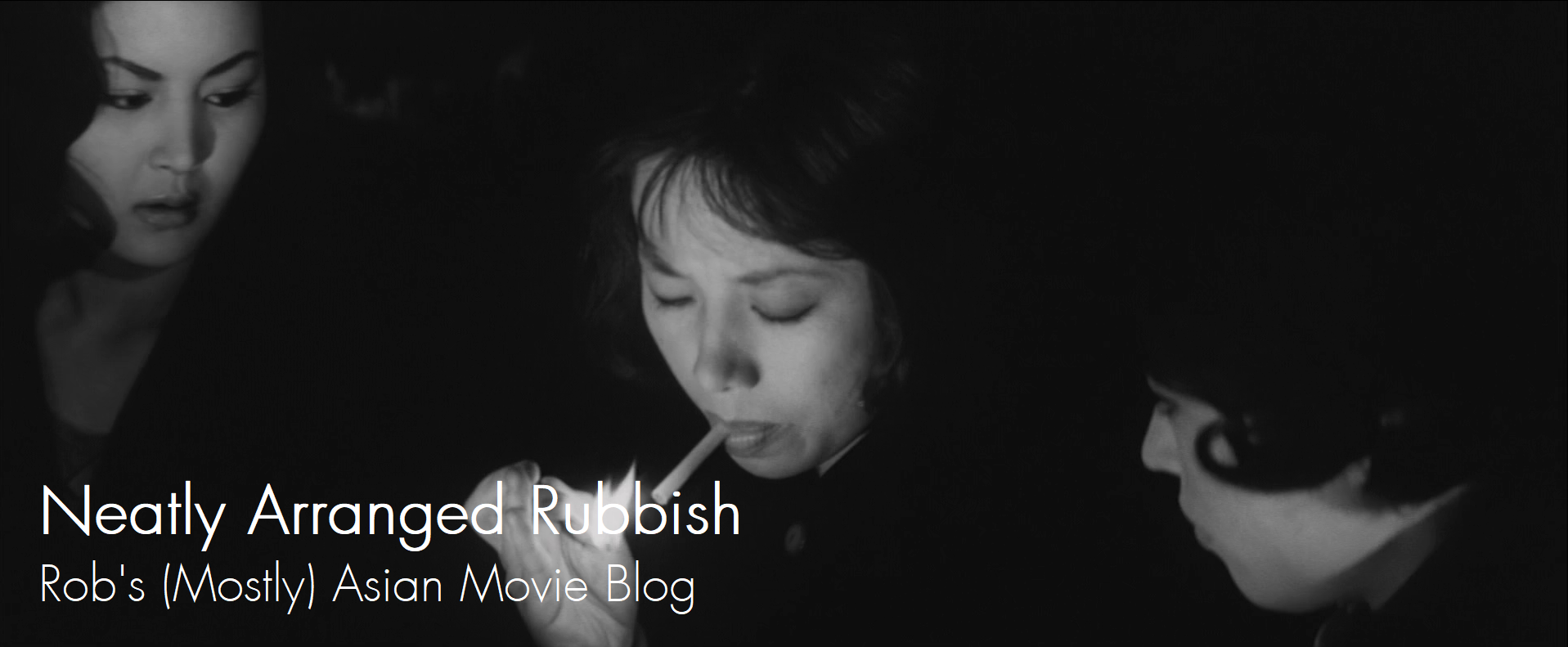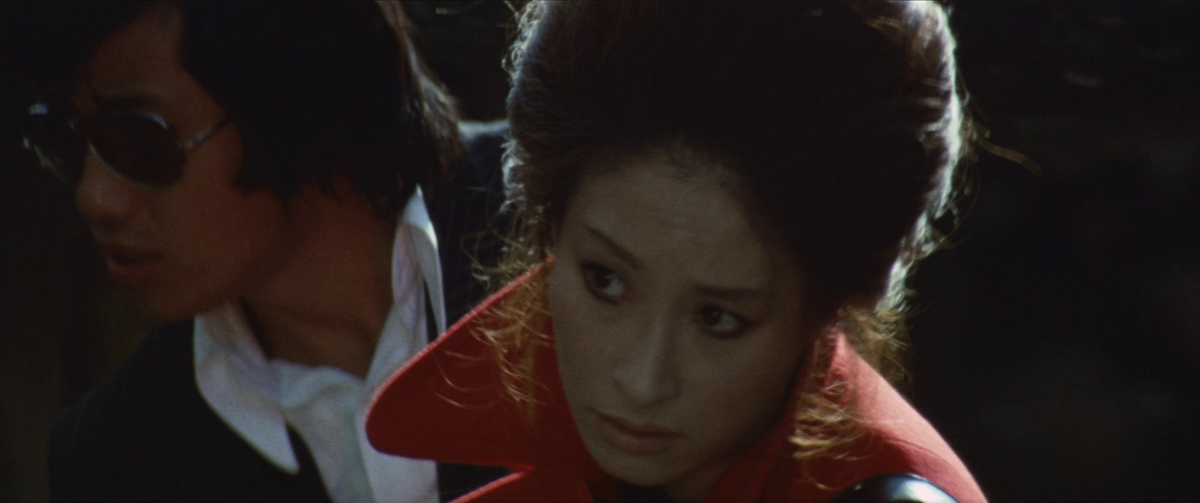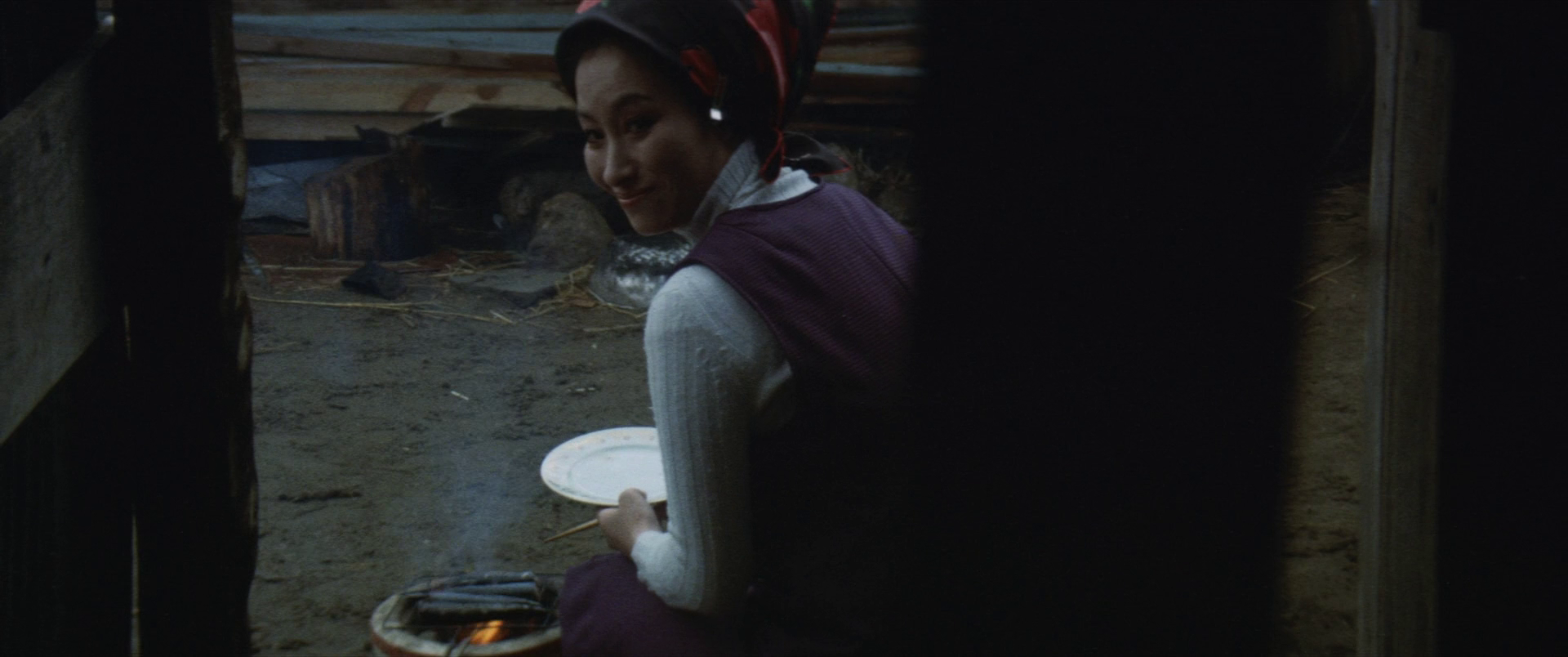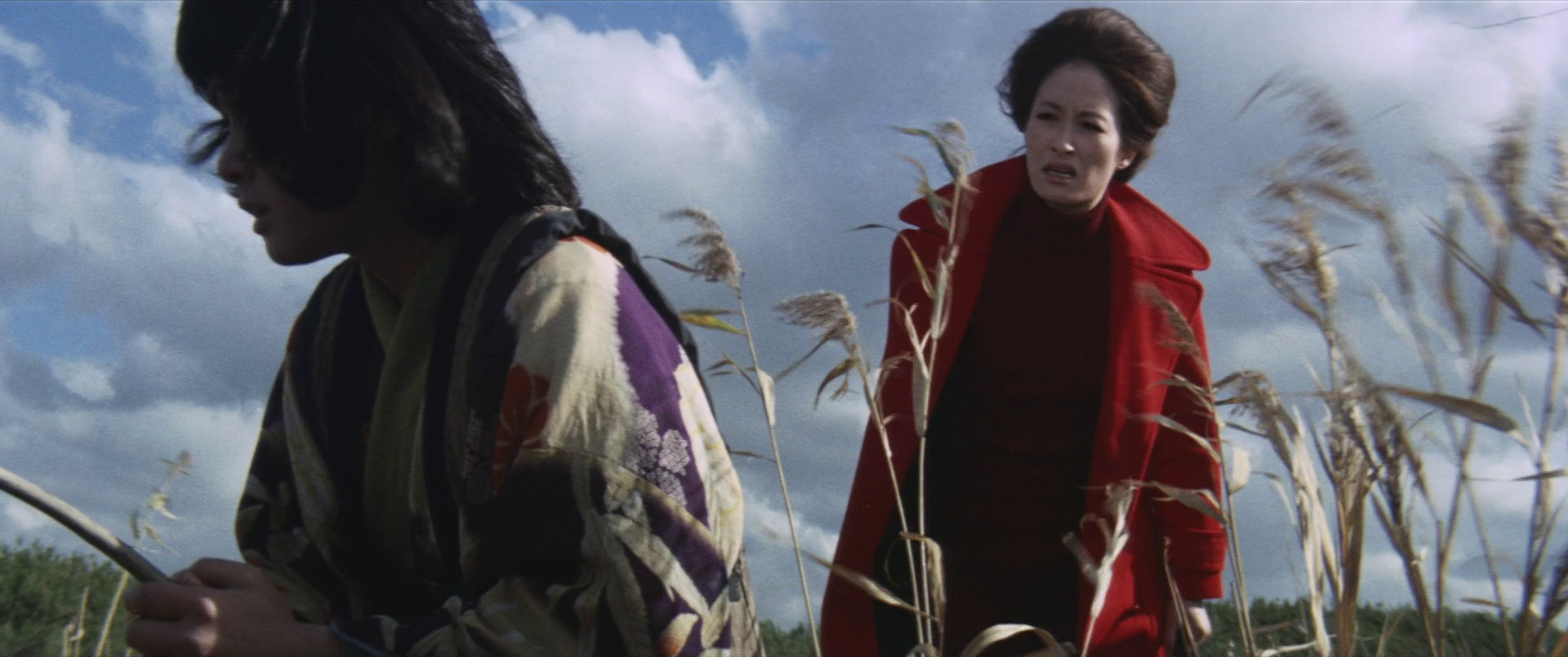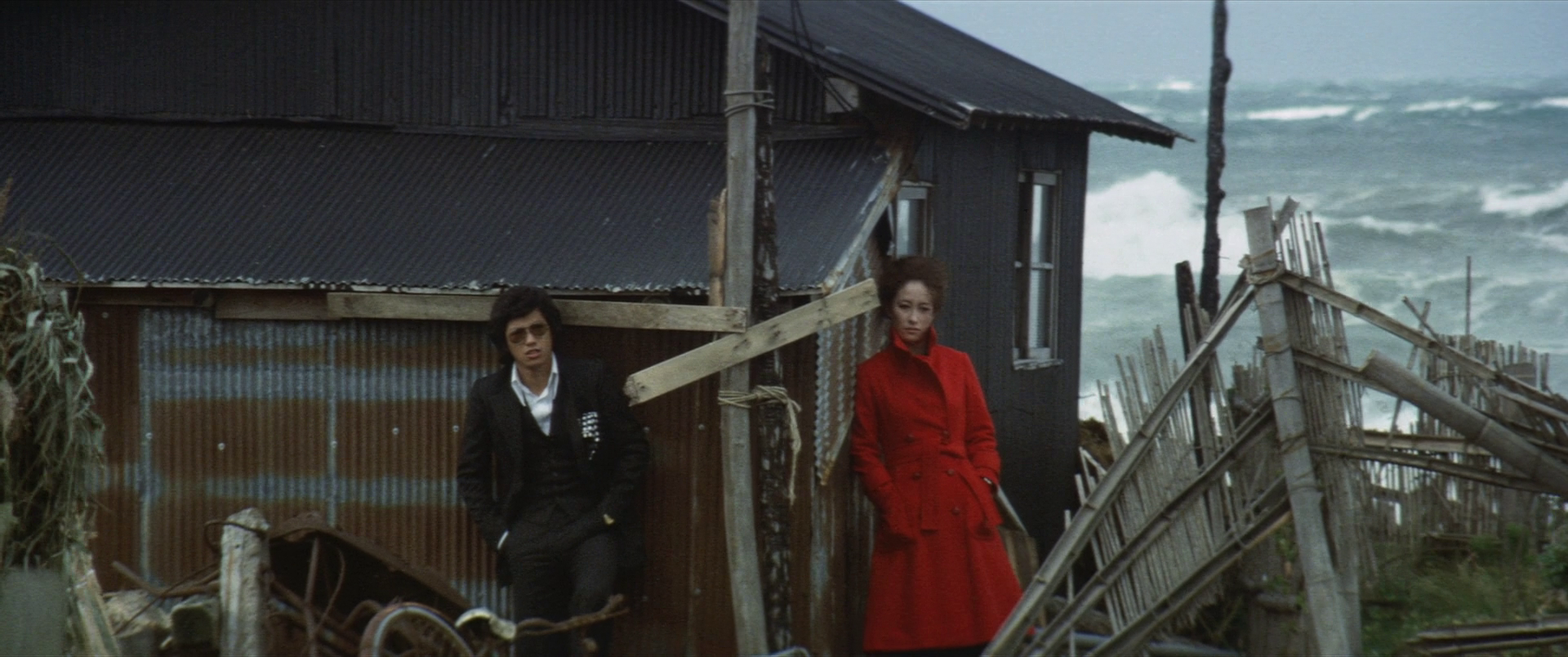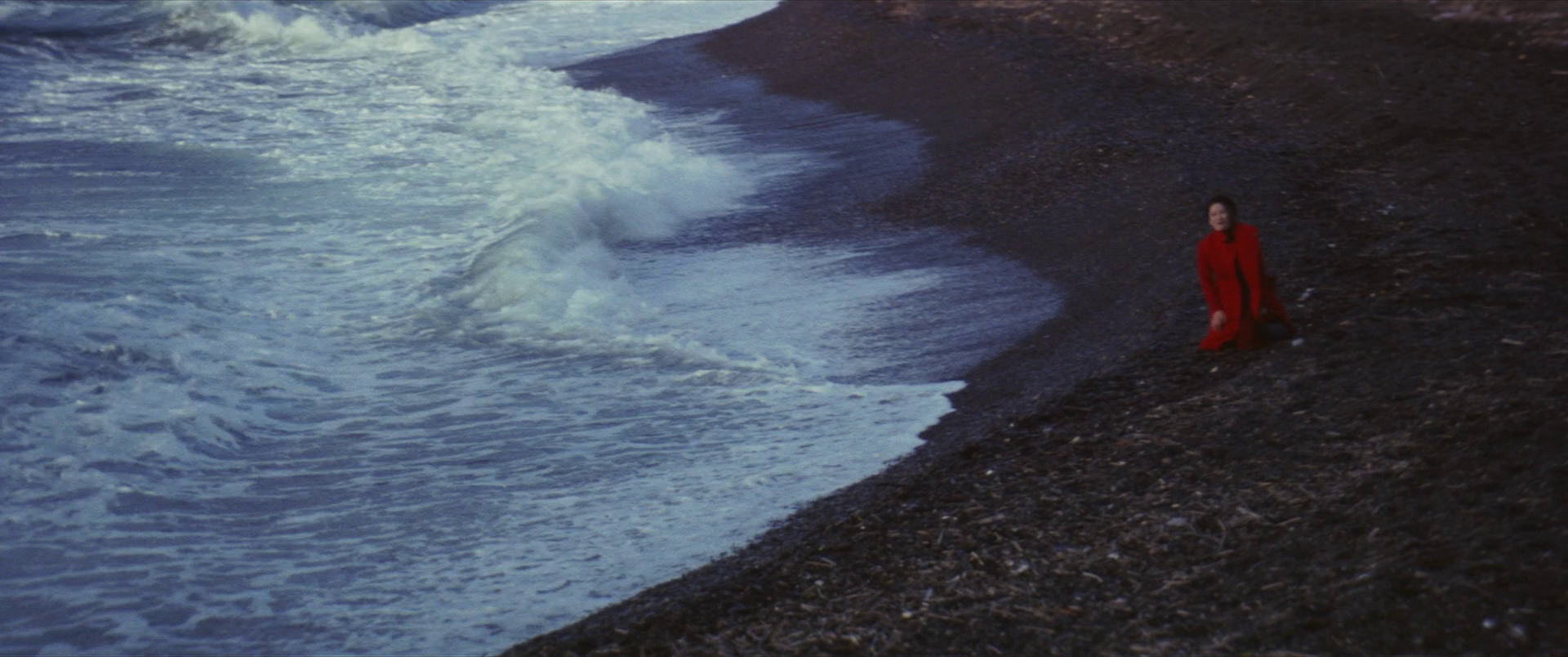Last Updated on November 19, 2020 by rob
In the former fishing village she grew up in the beautiful Isako (Kyoko Enami) arrives from Shinjuku with her youthful lover, a fugitive Yakuza named Tetsuo (Akira Oda). He finds it hard to adjust in this desolate place until he strikes up a friendship with a young blind girl named Yuki (Mihoko Nakagawa). But Isako finds herself beset by a series of calamities and unable to persuade Tetsuo to come back to her she flees the village in despair. As Tetsuo makes plans to marry Yuki and work as assistant to local fisherman Tamezo (Ko Nishimura) two strangers arrive in town and with them Tetsuo’s past catches up with him.
A bleakly compelling and incredibly atmospheric drama from Koichi Saito and very much in the mould of his Shadow of Deception (1971) and The Rendezvous (1972), with characters whose lives seem fated. Takehiro Nakajima and Koichi Saito’s script absorbingly contrasts what appears to be the differing fortunes of the pair. It’s Isako who arrives full of hope and belief that the love between her and Tetsuo will see them through, while young Tetsuo can’t bear the place. But as things tiurn out nothing but bad luck plagues Isako. Her savings are stolen, her dream of securing an insurance payout on the death of her father and brother at sea end up dashed and the growing bond between Tetsuo and a local blind girl named Yuki proves too strong to break.
Isako’s the one who ends up screaming in despair that, “This land is cursed” even as orphan kid Tetsuo finds a future wife in Yuki, a father figure in the grumpy Tamezo and – in a complete reversal of his initial feelings – decides to stay on. And yet despite moments of real warmth – such as the scene in which a miserable Tetsuo suddenly bonds with the locals over a card game, or his awkward but sincere displays of affection for Yuki – an overwhelming sense of doom hangs over everyone and everything. Sweet Yuki dreams of becoming a Goze. Those are blind, female musicians who historically travelled in groups from village to village, playing the shamisen. At various points Saito cuts to paintings of the Goze, startling images of grieving women with their shamisens under blood red skies that are as striking as they are unsettling. Why do they look so unhappy? “The men always leave” says Tamezo and that line proves to be ominous foreshadowing for a string of tragic coincidences connecting these characters in a manner that recalls Eastwood’s brilliant Mystic River. Even when Isako leaves the village for the last time a chance encounter with Tamezo on the path out of town chillingly underlines the film’s bleak worldview.
What Saito ultimately achieves here is to make the story of Isako, Tetsuo and Yuki feel as though as it’s one of the Goze’s own folksongs, a kind of lament, a tale of sorrow for the women whose men, indeed, always leave. It’s quite brilliant in that respect but you don’t see it coming until the very last scene. The performances are wholly engaging. You really feel for Kyoko Enami’s character as her determinedly cheerful demeanour crumbles in the face of repeated setbacks. A scene in which Isako allows a lecherous bar owner to grope her body in front of Tetsuo – in a desperate effort to provoke him into taking her back – turns into the most crushing of humiliations for this woman as her lover turns and just walks off. This is a woman who has staked everything on just up and running off with this guy from the city only to see all her effort, all her dreams of a happy future, all come to naught. Your heart just breaks for the poor girl.
Akira Oda as Tetsuo has to go from being an obnoxious, bratty child in the first third of the movie to winning our interest and affection even when he does things as horrific as sell Yuki to the bar owner as a whore to service the locals. That he quickly changes his mind and rescues her from harm reassures us that underneath that juvenile exterior there’s a good heart. Old pro Ko Nishimura has a small but pivotal role as a grumpy fisherman who has a personal grudge against Isako and Mihoko Nakagawa is appropriately vulnerable as Yuki. There’s one more major character here but it isn’t an actor it’s the location. Under Noritaka Sakamoto’s bleakly beautiful cinematography this land does indeed seem cursed. The film’s observational yet tightly controlled visual style, with its authentically gloomy interiors and everything filmed in natural light (and in what are clearly very cold conditions) attains a kind of poetic realism, such as when Isako wanders the beach believing herself abandoned by her lover.
All of Saito’s 70’s films are distinguished by a strong sense of place but this one may just be the best of the lot. Right from the off one is captivated by the incongruous sight of Isako and Tetsuo in this godawful setting. She in her vivid scarlet coat carrying a few bags hastily stuffed with clothes, he in his suit with handkerchief dangling raffishly from his breast pocket. One senses that whatever brought these two here could only ever have been prompted by a matter of life or death (and so it proves). Sakamoto’s cinematography is careful to only ever frame the beachfront hovel the pair find shelter in against the backdrop of the raging sea. Shooting everything on a long (telephoto) lens the effect is to make it look as if the roaring waves (a constant presence both visually and aurally) are going to come crashing down on the shack at any moment and sweep them away. It’s quite stunning to see. The director also knows just when to juice things up. A car crawling slowly, ominously, past Tetsuo is a simple and effective bit of tension building.
Saito must have been understandably enamoured of the results here since he reworked so many of the elements for the following year’s The Rendezvous. Enami and Oida’s characters (the older woman with the younger man, both outsiders estranged from society) are virtual dead ringers for Keiko Kishi and Kenichi Hagiwara’s. The sequence of Isako’s visit to her family grave is reused, the setting of a bleak fishing village crops up again and both films are bookended by present day flashbacks. None of this is to suggest that Koichi was simply remaking the same film though because The Rendezvous is just as distinct from Tsugaru Folksong as both are from Shadow of Deception. However he was reworking the same elements yet coming up with something different and deeper each time. At any rate I think he’s a great director and it’s a crying shame he remains pretty much unknown in the West. I don’t see any festivals running Koichi Saito’s films to an appreciative audience but someone sure as hell should because this is fantastic filmmaking.
